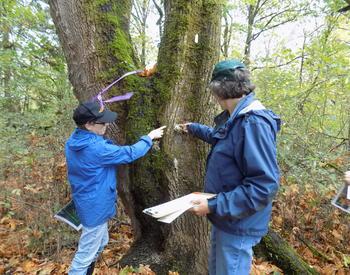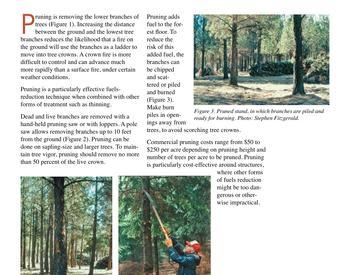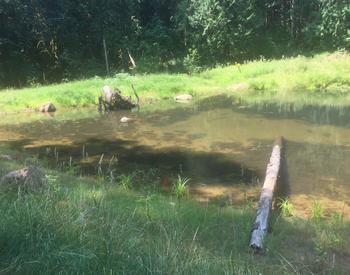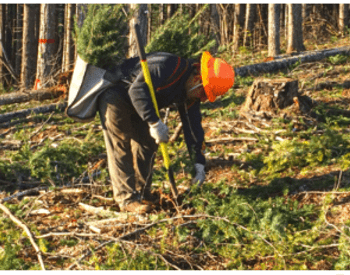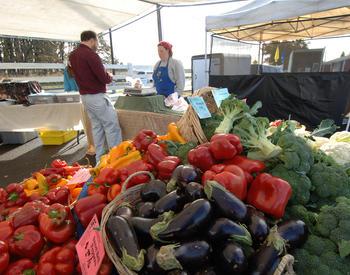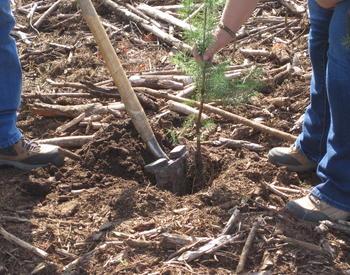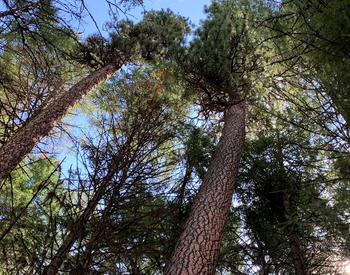Green side up and brown side down. Seriously, it's that easy! But, just in case you are a detail-oriented person, here are a few extra things to consider while getting those tree roots in the ground.
Pay special attention to your planting spot. Does it get a lot of sunlight? How’s the drainage? Will there still be enough space for the tree in 10, 20 or even 50 years when it is full grown? These are important questions to ask when choosing the type of tree you are going to plant.
Different trees have adapted to different environment conditions. If the environment doesn’t match the tree, there may be problems in the future. For example, ponderosa pine does well in the drier, heavy clay soils of the Willamette Valley. Douglas-fir does best in many western Oregon locations except on wet sites or in shady areas, where western hemlock or western redcedar may be a better choice.
Once you match your tree to your site, order some seedlings. If you are only planting a few, there are a lot of native plant nurseries to shop at. Additionally, you may consider finding local organizations that have native plant sales. Lane County Small Woodlands Association, for example, has a Native Tree Sale Fundraiser every year on the first Saturday in February at Alton Baker Park.
If you are planning on more than 150 seedlings, you’ll need to order them from a seedling nursery at least a year in advance. Contact your local Extension office for more resources to find seedlings.
Seedlings are able to endure the most handling while they are still dormant. This is why planting season is often opposite the growing season. In western Oregon, the planting season is from January through March for conifer (evergreen) trees. Hardwood (deciduous) trees will respond better when planted from mid-March through mid-April when lots of water is available.
Handle seedlings gently even while they are dormant because their roots are very fragile. If you are not planting your trees right away, store them in a cool (34° to 40°F), dark and moist place until right before putting them in the ground. When transporting seedlings, keep them away from direct sunlight and cover them with a reflective tarp. Seedlings left out in the sun or allowed to freeze will not survive the planting.
Special long-bladed shovels, planting spades, planting hoes (called hoedads) or power augers are used to plant seedlings. Dig your planting holes deep enough to so all the roots can hang down completely into the hole without bending. Do not cram roots into the planting hole. Plant seedlings upright and cover all the roots with firmly pressed soil to eliminate air pockets. Avoid mixing any organic debris, such as rotten wood, branches, or needles, in the planting hole. This can affect the water drainage or create air pockets when the soil settles.
Fertilizing at the time of planting can actually harm seedlings and is not recommended. Fertilizing newly planted trees can burn the roots, encourage excessive leaf growth or encourage the growth of weeds that compete with root establishment and water uptake.
If populations of deer, elk, gophers or mountain beavers are large, you can protect newly planted seedlings with tubes or deterrents. This way the critters can munch on better established vegetation allowing your trees a fighting chance.
If you follow these steps, you’ll have a beautiful tree to enjoy for years to come. Most of all, have fun getting some dirt under those nails.
